
Problem Hair on the Upper Lip
Hair on the upper lip is O.K. for a man, but a woman is likely to grab the tweezers at the first sign of a little fuzz. Tweezing is a handy and logical option for a few stray upper lip hairs. But for every girlie mustache, there's a bevy of good friends who'll pass along their contradictory tips---either tweezing your upper lip will make your hair thicker or repeated tweezing will cause the hair to grow thinner. The truth is that hairs on different parts of the body may not respond the same way to removal at the root. When it comes to upper lip hair, whether tweezing will cause the hair to grow back thinner or thicker is hard to predict.
Tweezing Removes Hair from the Follicle
No matter what type of hair is on the upper lip, tweezing removes the hair below the skin at the hair follicle. This causes trauma to the hair follicle.. A traumatized hair follicle does not regrow hair right away. The result is smooth skin lasting several days, just as advertised by many hair removal products and tools.
The Hair Regrows
Each hair follicle on the body has a growth cycle during which a hair grows, stops growing, falls out and then is replaced by a new hair. When an upper lip hair is tweezed, the growth cycle is interrupted. After the hair follicle recovers from the damage caused by tweezing a new hair begins to grow. The amount of time before regrowth occurs ranges among individuals, from just a few days to a few weeks
Two Types of Hair Are Found on the Face and Head
The hairs of the scalp and beard hairs in men are called terminal hairs. The other fine hairs that most women and children find on their faces are shorter and more fine in texture. These are called vellus hairs.
Some Researchrs Think Upper Lip Hairs Can Change Type
Some studies, like one conducted by the Symposium on Adolescent Gynecology and Endocrinology, suggest that facial hair follicles may respond to the repeated trauma of tweezing by changing from vellus type hairs to terminal type hairs. If this occurs, then upper lip hairs could become thicker and more like a male beard hair. However, the subject is still being studied, and is open to debate. For women who like to tweeze, the anecdotal evidence should be reassuring. All the upper lip tweezing of many generations has failed to produce any noticeable increase in the population of thickly mustached ladies.
Hairs Grow Back Uniformly
Another phenomenon that causes the illusion of thicker upper lip hair is uniform regrowth. Over time, if the upper lip hairs are all tweezed at the same time, they'll tend to regrow at the same time too. So the upper lip hair may seem thicker when in fact, the quantity of hairs is the same, as is their texture.
Upper Lip Hair May Thin with Repeated Tweezing
Some people who regularly tweeze their upper lips notice that in time the hairs grow back more sparsely and finer in texture. This happens when repeated trauma to the hair follicle causes the follicle to stop growing hair all together or produces a finer hair.
Related Articles

How Long Does It Take to Grow Back ...

Women With Facial Hair Shaving Vs. ...

How to Make Hair on the Upper Lip Stop ...

What Are the Dangers of Men's Brazilian ...

How to Make a Mustache Less Noticeable ...

How Long Does Tweezing Last?

Will Over Plucking Stop Hair Growth?
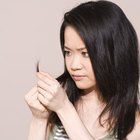
What Are the Causes of Hair Shedding in ...

What Are the Causes of Graying Hair?
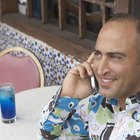
Does Borage Help with Thinning Hair?
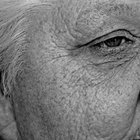
Facts on Natural Hair Changing Color

How Do I Reduce Pain When Plucking Leg ...
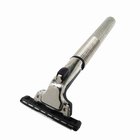
Is it Bad to Shave Facial Hair for ...

The Effects of Vitamin-D Deficiency on ...

How to Stop Hair From Growing at the ...

Can Hair Dye Cause Severe Itching of ...

Home Remedies to Permanently Remove ...

How to Stop Hair Growth on Your Fingers
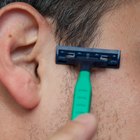
How to Remove Hair on the Side of My ...
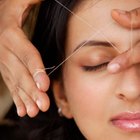
Disadvantages to Eyebrow Threading
Writer Bio
This article was written by the CareerTrend team, copy edited and fact checked through a multi-point auditing system, in efforts to ensure our readers only receive the best information. To submit your questions or ideas, or to simply learn more about CareerTrend, contact us [here](http://careertrend.com/about-us).
Photo Credits
Image: M. J. Doran